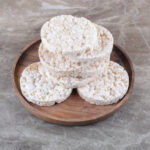In recent news, the Centers for Disease Control and Prevention (CDC) issued a public health alert concerning a multi-state outbreak of Salmonella infections associated with the consumption of raw flour. As of the latest updates, this outbreak has affected 12 individuals across 11 states, leading to three hospitalizations. Thankfully, no fatalities have been reported. The CDC’s ongoing investigation has yet to pinpoint a specific brand responsible for the outbreak, emphasizing the pervasive risk of Salmonella in non-brand-specific raw flour products.
Understanding Salmonella and Its Association with Flour
Salmonella, a bacterium that causes more foodborne illnesses than any other, thrives between 40℉ and 140℉, a range known as the “Danger Zone.” Contrary to common belief, not only raw eggs and uncooked meats but also raw flour can harbor this pathogen. Flour, although it appears innocuous, is considered a raw food because it lacks any bacterial reduction treatment during processing. This makes any culinary creation involving raw flour—such as dough or batter—a potential vehicle for Salmonella.
The Specifics of the Current Outbreak
The strain identified in the current outbreak, Salmonella Infantis, is particularly concerning because it can survive in both animal and plant-based products. According to Martin Bucknavage, a Senior Food Safety Extension Associate at Penn State, this contamination often begins in the field where the grains are cultivated. Without adequate heat treatment during cooking or baking, Salmonella remains viable in the flour, posing a significant health risk when the flour is consumed raw.
Health Risks and Symptoms of Salmonella Infection
Salmonella infections typically manifest mild symptoms like diarrhea, fever, and stomach cramps, appearing anywhere from six hours to six days post-exposure. While these symptoms generally resolve without medical intervention within a week, the infection can be particularly severe in vulnerable populations such as the elderly, children, and those with weakened immune systems. Severe infections may lead to high fevers, persistent diarrhea, dehydration, and even hospitalization. Immediate medical attention is advised if symptoms escalate or persist beyond a few days.
Preventive Measures to Mitigate Risk
To prevent Salmonella infection, the CDC advises against consuming raw dough or batter. Cooking or baking at the correct temperatures effectively kills the pathogen. Households should practice safe food handling by thoroughly washing hands, utensils, and surfaces after contact with raw flour. Additionally, segregating raw flour from ready-to-eat foods and using heat-treated flour for non-cooked recipes can further reduce the risk of infection.
Staying Safe with Raw Flour
As the investigation continues, adhering to CDC guidelines remains crucial. By recognizing flour as a potential carrier of pathogens and following recommended safety practices, consumers can significantly mitigate the risk of Salmonella infection. Engaging with these guidelines not only enhances personal safety but also enriches understanding of food safety, making each culinary endeavor both safer and more enjoyable. Awareness and education are key to preventing further spread of this outbreak and ensuring the health and wellbeing of communities nationwide.











